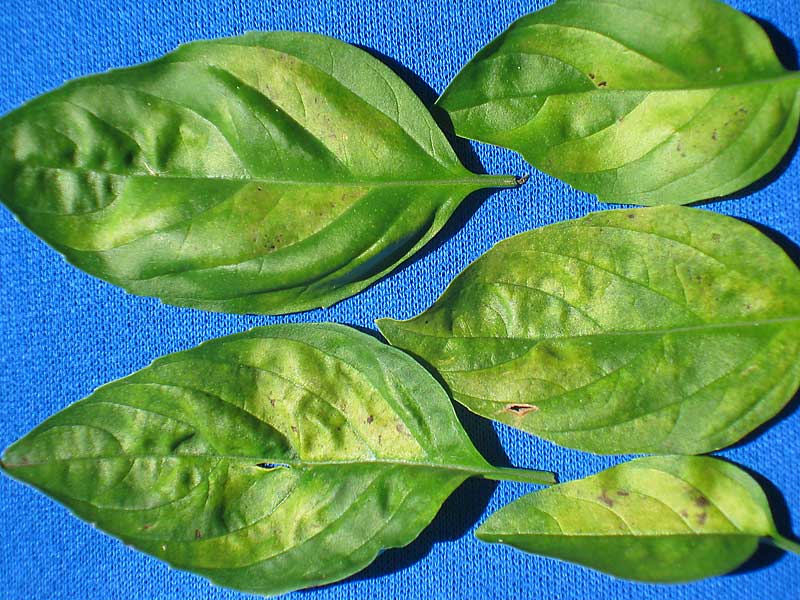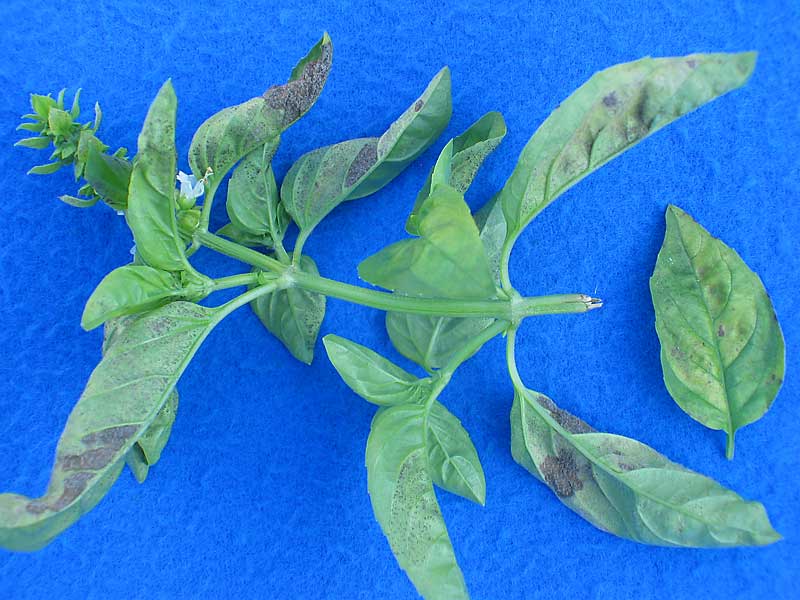Sweet basil, the mainstay herb of summer, is under attack from an aggressive fungal disease named downy mildew. Long an affliction of other plants, the disease is new to basil in the United States and threatens to become a permanent headache for grower, gardener and cook alike.Cornell's plant pathology website has this information about the disease:
The disease was first found in Uganda in the 1930s but didn't appear again until nine years ago, in Europe. The first cases in the United States were in south Florida in 2007; it has spread since along the East Coast and in Canada, parts of the Midwest and California.
The effects first appear as faint yellow bands on the upper surfaces of the leaves. The lower leaf surfaces become dotted with tiny gray specks.
The best thing for the basil home grower, is to plant it in open, airy, sunny locations. Minimize leaf wetness by conducting overhead watering only in the morning to make sure any moisture on the leaves dries quickly, and pick off any leaves that show signs of the disease.
Downy mildew of basil is a new, destructive disease that is expected to occur routinely in the USA as it has been doing in Europe since first occurrence. Downy mildew was reported as severe at many farms in the northeast USA in 2008, the first year it was observed in this region. Growers generally did not realize their basil had a disease because the most noticeable symptom on affected plants was yellowing, which was assumed to be the result of a nutritional problem.
The basil downy mildew pathogen (Peronospora belbahrii) can be spread in contaminated seed, through marketing of infected basil leaves, and as wind-dispersed spores. Downy mildew also was observed recently on ornamental plants related to basil, in particular coleus and salvia. These plants all belong to the Lamiaceae family, which includes basils (Ocimum spp.), mints (Menta spp.), sages (Salvia spp.) and other aromatics. Fortunately, the coleus and basil downy mildew pathogens have now been demonstrated to be genetically different; therefore, these ornamental plants are no longer considered potential alternative hosts.
There is no harm to people in eating infected leaves, but infected plants are unsightly and unsellable, so to be good neighbors to growers in our area whose livelihood depends on sellable produce, please keep an eye out for signs of the disease in your home gardens.




No comments:
Post a Comment